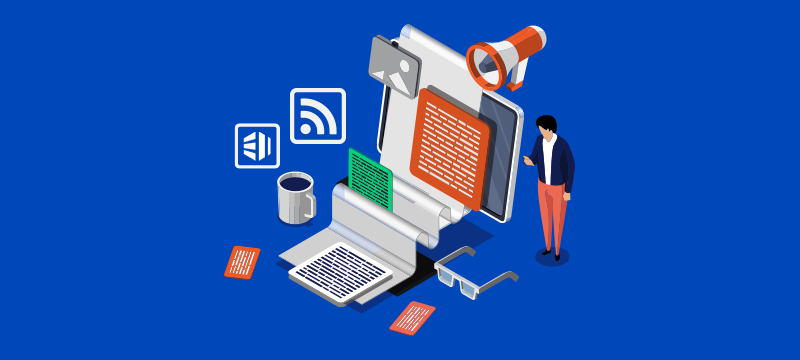While the number of individual users who download RSS feeds via email is now in decline, RSS is still used extensively by a wide range of content providers, like news channels, industry publications, forums and blogs, for syndication. Making your website user-friendly for RSS can, therefore, help you reach a much wider audience and ensure they can keep up to date with your latest content. Here we examine the benefits of RSS and some of the ways to make your website RSS user-friendly.
What is RSS?
RSS, short for Really Simple Syndication, is a technology that enables users and software to access new website content in a standard format. Basically, if you enable RSS on your website, individuals and other applications can subscribe to it. This means when any new content is published on your site, human and automated subscribers will receive a prompt copy of it.
The importance of the standard format is that users can subscribe to many different websites but the information they receive via RSS will all be in the same format, so it is easier to digest. The standard format that RSS uses is based on XML. XML is widely used across the internet to enable applications to exchange textual information. The feed that the user receives is provided in a simple plain text format, however, this does contain a link to the original version on your website, whether that’s to a page or to play a video, song or podcast.
In the early days of the internet, RSS was used by individuals to receive email updates from their favourite websites. These contained a summarised version of the content with a link to it. Although this is still possible today, it is no longer as popular as it once was as websites have adopted newer ways to keep individual users up to date, such as email subscriptions, notifications and messaging. However, there are now newer ways to distribute RSS feeds and these are still widely used by other websites and newsfeed providers to syndicate content.
Benefits of RSS
RSS newsfeeds enable websites to distribute content to a wider audience than just those that visit their site. Aside from distribution via email, today, newsfeeds can be accessed through web portals and news readers, or placed within widgets on websites and within other types of software. Newsfeeds like the one embedded into Windows or Upday, an app on Samsung phones, make wide use of this kind of technology, as do newspaper and magazine sites that supplement their own content with posts found on the internet.
By enabling your site to be easily added to an RSS feed, therefore, it has the chance to be syndicated across a broad range of other channels where new people can access it and, from there, visit your website. The benefit for the subscriber is that they can keep up to date with their favourite websites and blogs without having to visit lots of different sites. Of course, if there is something they want to see more of, they can simply click on the link.
Join the RSS parade
The benefits of RSS feeds mean that today they are used by many major organisations. These include news outlets like the BBC, eCommerce giants, like Amazon, and tech leaders, like Google for its Google News syndication. These are just a few of the multitude of music publishers, vloggers, bloggers and podcasters that rely on RSS to connect with their audiences.
How to make your website RSS user-friendly
Anyone who runs a website, writes a blog or publishes audio or visual content can make use of RSS to distribute their material. Some website platforms enable you to do this automatically, while for others there will be plugins or add-ons you can install that make it possible to change your content to the format that RSS requires.
Once this is in place, you can then enable RSS subscription on your website. Users can subscribe to your RSS feed by clicking on an RSS subscribe button. Today, this button (see the main image above) usually sits alongside the other social media subscription buttons on your pages.
Conclusion
For websites and other content publishers seeking to find a wider audience or looking to make it easier for users to subscribe to their updates, RSS remains an important option. Hopefully, this post will have explained the benefits of RSS and how you can make your site RSS user-friendly. If you are looking for help with SEO, our all-in-one SEO Tool is designed to make optimisation more effective and much less of a burden.



